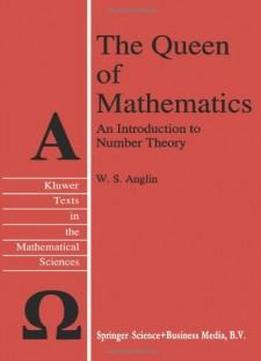
The Queen Of Mathematics: An Introduction To Number Theory (texts In The Mathematical Sciences)
by W.S. Anglin /
2011 / English / PDF
13.6 MB Download
Like other introductions to number theory, this one includes the
usual curtsy to divisibility theory, the bow to congruence, and the
little chat with quadratic reciprocity. It also includes proofs of
results such as Lagrange's Four Square Theorem, the theorem behind
Lucas's test for perfect numbers, the theorem that a regular
Like other introductions to number theory, this one includes the
usual curtsy to divisibility theory, the bow to congruence, and the
little chat with quadratic reciprocity. It also includes proofs of
results such as Lagrange's Four Square Theorem, the theorem behind
Lucas's test for perfect numbers, the theorem that a regularn
n-gon is constructible just in case phi(
-gon is constructible just in case phi(n
n) is a
power of 2, the fact that the circle cannot be squared, Dirichlet's
theorem on primes in arithmetic progressions, the Prime Number
Theorem, and Rademacher's partition theorem.
) is a
power of 2, the fact that the circle cannot be squared, Dirichlet's
theorem on primes in arithmetic progressions, the Prime Number
Theorem, and Rademacher's partition theorem.
We have made the proofs of these theorems as elementary as
possible.
We have made the proofs of these theorems as elementary as
possible.
Unique to
Unique toThe Queen of Mathematics
The Queen of Mathematics are its presentations
of the topic of palindromic simple continued fractions, an
elementary solution of Lucas's square pyramid problem, Baker's
solution for simultaneous Fermat equations, an elementary proof of
Fermat's polygonal number conjecture, and the Lambek-Moser-Wild
theorem.
are its presentations
of the topic of palindromic simple continued fractions, an
elementary solution of Lucas's square pyramid problem, Baker's
solution for simultaneous Fermat equations, an elementary proof of
Fermat's polygonal number conjecture, and the Lambek-Moser-Wild
theorem.











